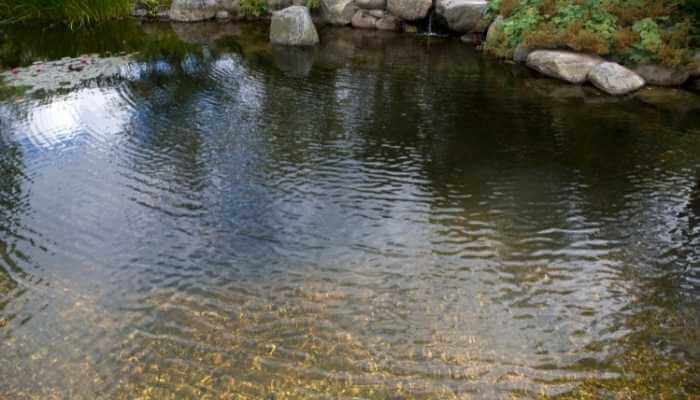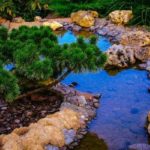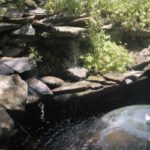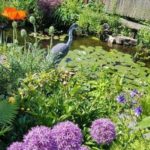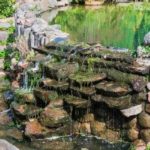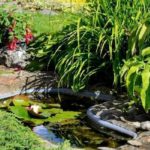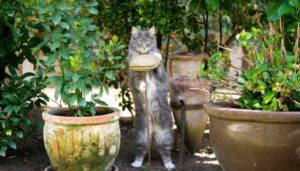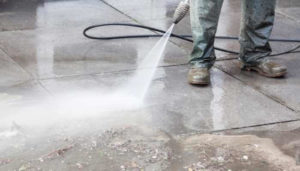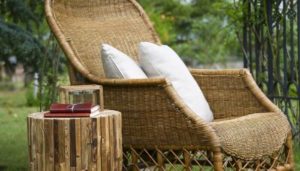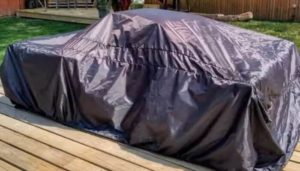One cannot simply use tap water and nothing else and expect their pond to flourish. What kind of additives go into your water depends upon what you want to grow in your garden pond and around it.
Water in a pond must be treated for chlorine and chloramine. Your garden pond water should be tested regularly to be sure it has a proper pH and no substances that can be harmful to the ecosystem. You should maintain the pond with the proper equipment, cleaning, and additions to keep it thriving.
Let me guide you through what is necessary for adding water to your garden pond whether you’re just beginning to fill it for the first time, adding more water during dry spells, or treating water throughout the year.
Can I Use Tap Water in a Garden Pond?
You cannot use regular tap water in a garden pond if it hasn’t been treated. All water that comes through the tap in developed countries has a variety of chemical additives to make it safe to drink, including chlorine and chloramine. These two chemicals are fine for humans but deadly for fish, beneficial bacteria, and even some plants.
Chloramine can be worse. It’s used as a cheaper method of cleansing water for human consumption because it doesn’t evaporate as easily as chlorine. However, if you have chloramine instead or in addition to chlorine in your tap water, the standard dechlorination treatment will not work to rid the water of the chemical. You can find out which is being used by contacting your local water company.
To remove chlorine from tap water, you can usually just let it sit and it will evaporate into the air within a 48-hour period of time. If you have a mixture of chloramine or a mixture of the two, you’re going to need to get a water conditioner specific to removing that chemical. Always go by the directions on the bottles for the use of the conditioners and double-check the effectiveness against chloramine.
There are also specialized filters that can remove both chlorine and chloramine as well as other pollutants from your pond water. One is an activated carbon charcoal filter also known as catalytic carbon filtration. The other is a dechlorinating filter. You’ll get the best results by using these filters in conjunction with conditioning treatments and letting your water sit before adding fish or sensitive plants.
Can I Use Water from a Roof Drain Rain Barrel in My Garden Pond?
I see people go back and forth on this. But most people who use roof run-off (including me) have had no issues with the water containing any kind of toxins being introduced to the pond from it. This saves on your water bill and can help in droughted areas. But it also depends on the type of roof.
If your roof is made from petroleum-based shingles this may not be a good idea. There are filters you can use, though, that can clean the water before you use it in a pond or in a garden. You can always test the water you collect from a roof to be sure there are no issues with it before adding it where you want it.
There is also a system in rain barrels called “first flush” that stores the first gallons of run-off separately from the rest of the water because that run-off contains the majority of contaminants. You’ll want to keep your rain barrels clean as well.
What Should I Add to My Pond Water If I Plan on Having Fish?
Besides going through the process of dechlorination, there are other things you need to consider before adding fish to your pond water.
Whenever you are planning a garden pond ecosystem you should keep in mind the nitrogen cycle of that pond. Fish create waste. Waste produces ammonia 9which is harmful to fish). Natural beneficial bacteria break down the waste to make substances that plants can use.
So, you need to be sure you cycle your pond water through the pump and filters for a while before adding fish. This is done until there is a good level of beneficial bacteria in your pond that can handle the waste. You should also add plants into the environment to feed off of the compounds produced in the nitrogen cycle.
If you do have a lot of plants in or around your pond and the silt or sludge is building up thanks to organic matter falling into the water (leaves, blooms, dirt, etc…) you may need to add beneficial bacteria products to give it a kick start. If you don’t, too much sludge can cause problems with water clarity, odor, and algae growth.
What Should I Add to My Pond Water If I Want to Grow Water Plants?
Again, the water should be dechlorinated or harmful compounds removed using conditioners and filters. Beneficial bacteria will need to be added to help kickstart the nitrogen cycle to be rid of any sludge that might build up.
If you have an overabundance of any harmful substance in your pond water, it could be a problem. You can purchase test kits that help you test pH and substances. Or you can take a water sample to some local stores to get it tested. It’s better to know exactly what your pond needs rather than adding anything to it that might cause problems.
Appropriate ranges for substances and pH:
| pH | 7.0 – 8.0 |
| Nitrite | 0 to < 5 part per million (ppm) |
| Ammonia | 0 to 1 part per million (ppm) |
| Chlorine | 0 or as close to 0 as possible |
What Can I Use in Pond Water to Make It Resistant to Algae?
If you want to go the natural route, most garden pond enthusiasts I’ve talked to use barley straw. I used it when we had our garden pond and it worked wonderfully. I just had to be a little patient with it, because it takes the straw some time for decomposition to begin. The decomposition of the barley releases a compound that kills algae but is safe for fish and other plants.
If you need a quick cleaning, you can get this compound in liquid form as well as in smaller pellets. If you get a bale (a bale usually works to clean 1000gallons of water) and bundle your straw into a mesh and hang it where the water is expected to flow through, this will begin cleaning your pond water after a few weeks
While you’re waiting on this to work, begin removing any algae you can with nets and gloves. You can also remove algae from the sides of your pond by just using a brush of some kind. I found a newly purchased toilet brush to be quite useful. While you’re trying to get rid of an algae problem, rinse your filers and pumps daily.
You can help keep algae from even beginning in your garden pond by keeping the pond clean of any extra debris. You can preemptively add the barley straw in the spring of each year to get a head-start on providing the proper compounds to help your water resist the algae.
How Should I Add Water to an Already Existing and Thriving Pond?
Assuming you had your water at the appropriate pH, to begin with, and it was safe, there are specific steps you need to take to add more water to the pond. You want to get the new water into a container for it to come to the same temperature as the pond water. You also want that water to be pretreated or dechlorinated.
When you actually add the water to your pond, you should be gentle, adding it at a constant, slow pace so that you don’t disturb much of the debris in the bottom of the pond. Also, choose the entry point wisely. Don’t aim for right above the fish or near them and delicate plants.
In Conclusion
I hope this article has helped you in your quest for knowledge when it comes to the water you need and the treatment of said water in your garden pond. It’s not all cut-and-dry, but it’s simpler than most people think it will be.
Don’t use any water that hasn’t been tested or treated and keep that water clean with the proper pH and substances that promote a good ecosystem. Remember to maintain your pond to keep algae growth down and to help it thrive.
If you want to know more about garden ponds, look for my other articles on the subject.
